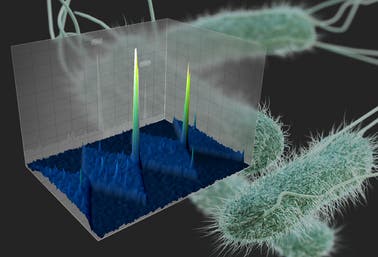Your gut is home to some 100 trillion bacteria – more than the entire number of cells in the whole human body. Clearly, bacteria are fond of human intestines, as we humans, unknowingly or not, are fond of them. After all, without bacteria our organisms would be deprived of extremely vital vitamin sources and digestion aids. However, not all bacteria are beneficial – some, of course, are detrimental to human health and can cause death. Diagnosing bad bacteria infection is currently a laborious, lengthy and expensive process. A new device developed by scientists at Arizona State University’s Department of Chemistry and Biochemistry seeks to address this issue by significantly speeding up harmful bacteria identification. Hopefully, in the next phase the researchers will turn the device portable, so that doctors as well as anyone else for that matter may run a quick check for bad bacteria effortlessly.

Microscale electric field gradients can tell the difference between good and bad bacteria in minutes from extremely small samples. Photo: Paul V. Jones
One of the most common gut bacteria is the E. coli, which for the most part is beneficial for the organism producing K2 vitamins and preventing the establishment of pathogenic bacteria. Some E. coli strains, however, are harmful like the O157:H7 E. coli strain which is responsible every year for 2,000 hospitalizations and 60 deaths in the U.S. alone. Bacterial diagnosis typically involves collecting a culture sample either from food or infected patients, after which lab analysis is performed. Usually this takes a few days to make and is costly.
[ALSO READ] How bacteria colonize the human gut – study reveals important insights
Researchers at Arizona State University believe they have found a solution that could be used to easily and cheaply diagnose bad bacteria in a matter of minutes, instead of days. Inside a polymer chip, a saw-toothed microchannel concentrates and sorts microorganisms inserted inside based on their electrical properties. All forms of matter, including bacteria, have their unique electrical properties and simply by studying their electrical response researchers can tell what kind of bacteria they’re dealing with.
Sorting out germs
For their device, the Arizona researchers used an ordinary strain of E. coli along with two pathogenic varieties. They injected the cells into each channel and simply applied voltage to drive the cells downstream. The geometric features of the channel shape the electric field, creating regions of different intensity. This field creates what’s called a dielectrophoretic force which traps certain kinds of bacteria around the channel based on their molecular and electrical properties. During their demonstration, the team led by Professor Mark Hayes, separated extremely similar bacteria—pathogenic and nonpathogenic strains within the single species, E. coli.
“The fact that we can distinguish such similar bacteria has significant implications for doctors and health officials,” says Hayes. He explains, “that scientists have struggled to find ways to rapidly identify bacteria. E. coli O157:H7 is very similar in size and shape to other subtypes of the bacteria. But unlike many of the others it has the ability to produce shiga-like toxin, a protein that breaks down blood vessel walls in the digestive tract.”
It’s important to mention that the device worked with pure cultures. Obviously, in the real world when you carry out a sample it will be filled with all kinds of impurities. The researchers plan to tackle this with their next version which should be able to accurately detect bacteria in a complex mixture. Also, making the device portable is a big goal.
The device was described in a paper published in the journal Analytical and Bioanalytical Chemistry.









